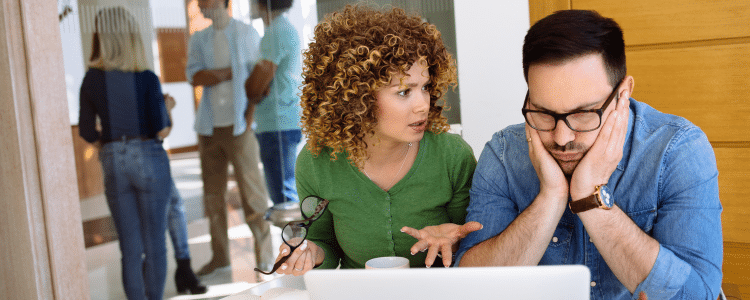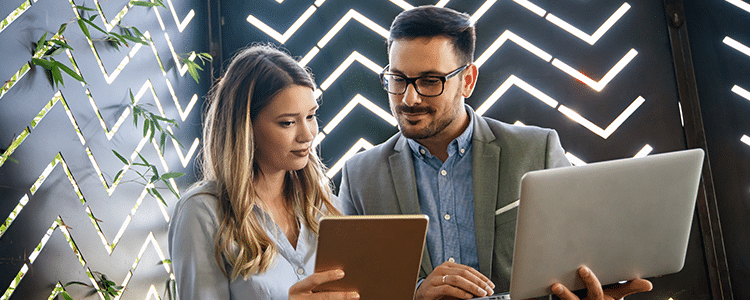A competitive business rarely stays stagnant. New enterprise software replaces aging legacy systems, improved processes replace familiar workflows, and employees adapt to new job roles.
If you’re about to begin a digital transformation, you probably understand the importance of organizational change management (OCM). However, you might not know everything it entails.
Organizations are often surprised to discover just how extensive OCM can be. It’s more than just the basic change management activities that everybody knows about. It’s a structured process that’s fully integrated into your project strategy.
Today, we’re breaking down some of the key components of change management that many organizations overlook.
7 Key Components of Change Management
1. Change Management Assessments
Regardless of how beneficial a new software solution might be, any change can be jolting to your workforce.
How jolting? There are ways of finding out . . .
While there are many different types of change management assessments, the three most common include:
- Change Impact Assessment: What processes will be impacted? Which people will the change affect the most?
- Organizational Readiness Assessment: In general, is your company culture open to embracing change? Does the culture align with the changes being proposed?
- Stakeholder Analysis: What do your stakeholders care about? What relationships exist between each stakeholder?
Our organizational change management consultants can help you determine which assessments you need to conduct before diving into software implementation.
Change Management Case Study
The client recognized their need for more comprehensive change management, so they asked us to fill in the gaps. We developed a robust communication plan to supplement the vendor’s communication approach.
2. Communication Planning
Effective change requires effective communication planning. This is one of the pillars of a change management strategy and it requires ongoing attention.
The messages you share about your project can have a major influence on how well your workforce takes the news. It’s important to communicate often, tailoring your message to each group.
Other best practices include:
- Incorporate your communication plan into the overall project strategy
- Establish a dedicated communication team
- Encourage end-user feedback
Remember to communicate continuously, at every stage of your project. Even after you go live with your software system, it’s important to check in with your team members and keep those lines of communication open.
3. Sponsorship Roadmap
The Project Management Institute explains that sponsorship is the number-one success factor in determining project success.
Sponsorship is also one of the best practices we recommend to clients. Our software expert witness team has analyzed more than a few ERP failures that lacked project sponsorship.
A change sponsor should exhibit the following traits:
- Can clearly articulate your company vision
- Is confident enough to speak about the change
- Can unite high-profile teams to give the project visibility
Identifying sponsors can be challenging, so it helps to develop a plan. That means a sponsorship roadmap. This is a tool that helps organizations identify change sponsors and plan how the project team will support them.
As you’re developing your sponsorship roadmap, consider what information you will communicate to sponsors. For starters, you must communicate the importance of sponsorship. Then, you should explain how each sponsor should go about building a network of support.
4. End-User Training
When employees resist change, it’s often because they don’t feel entirely comfortable using the new technology. You can help address some of those concerns by focusing on end-user training.
Some best practices for developing a training strategy include:
- Conduct multiple change impact sessions
- Customize the training based on how each group will be impacted
- Plan training resources and sessions strategically
- Leverage department leads and SMEs for support
- Collaborate with your communications team
After go-live, your training efforts should continue. As you monitor user adoption, you’ll identify additional training opportunities.
5. Resistance Management
Even if you implement all the principles of change management, you may still experience a degree of pushback when you begin your software implementation.
When this happens, there can be a various root causes, including but not limited to:
- Lack of employee awareness
- Lack of employee involvement
- Lack of support from executive leadership
To address these issues, you must include resistance management within your change management plan. In other words, outline the steps required to identify, understand, and manage resistance across your workforce. Then, help leaders implement these steps within their departments.
Formalizing this process will help you communicate the right messages to the right individuals, while encouraging employee feedback. When resistance is proactively addressed, it is less likely to usurp your project.
6. Change Reinforcement
When you recognize and reward individuals as they make strides with new technology and processes, you send the message that the change is here to stay, and continued adoption is essential.
7. Results Management
It’s important to measure change management effectiveness throughout the project so you can adjust your change management approach as necessary.
A dedication to continuous improvement is key in this regard. By looking for new ways to help your employees embrace change, you’re turning change management into the core competency it was meant to be.
What Else Does Change Management Include?
The key components of change management can’t be outlined in a single blog post. That’s where our change management consultants factor in.
We have the tools and resources to help you ensure employee buy-in and manage change resistance. Request a free ERP consultation below to start crafting your OCM strategy.














